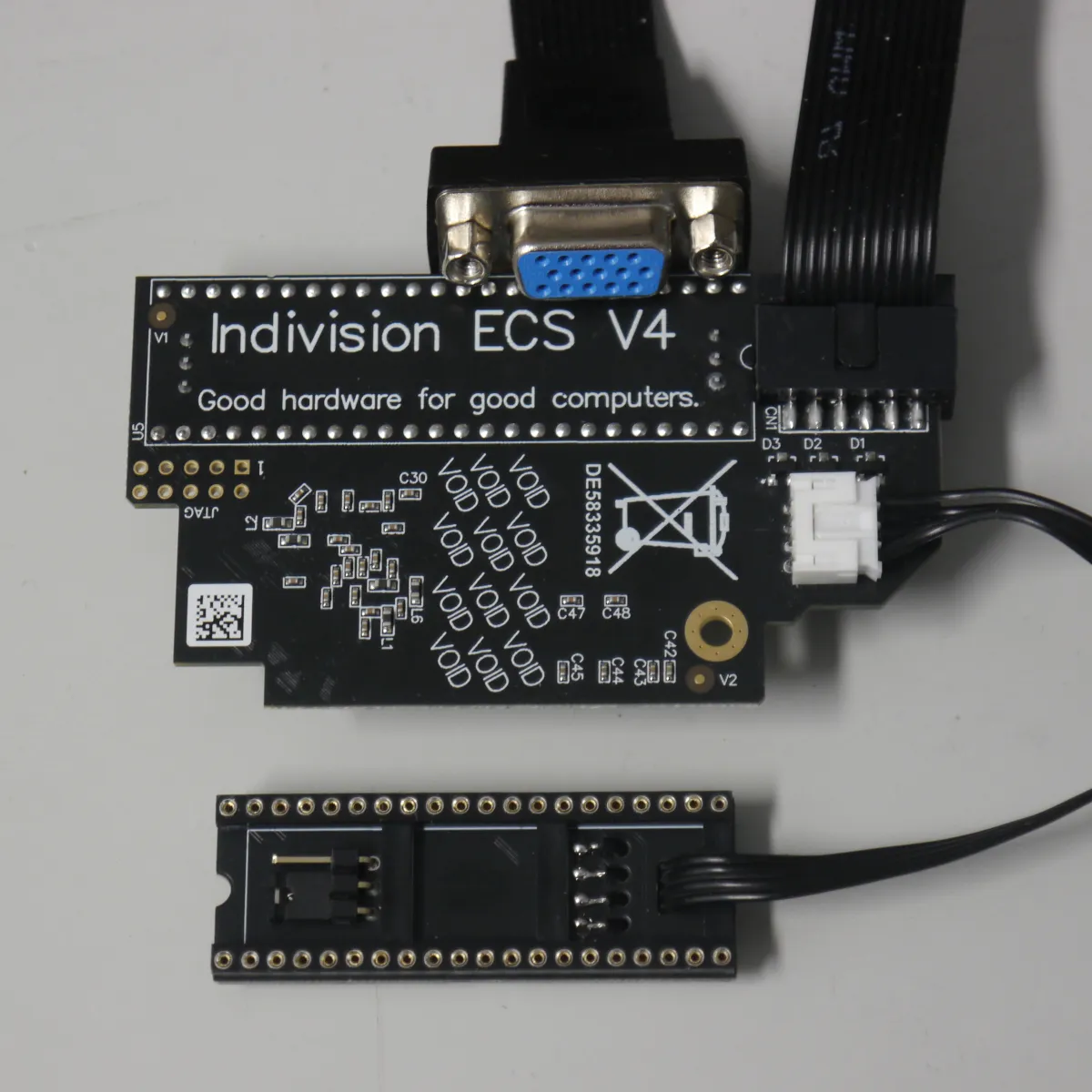Reviving My Amiga 500+ (Part 1): A Hands-On Experience with the Indivision ECS v4
I’ve been trying to bring my old Amiga 500+ back to life for the past few months. From time to time, I set aside a bit of budget to add new components here and there. I also gave it a thorough cleaning. Once I feel it’s truly “ready,” I’d like to share the final result with you here.
The most premium piece I’ve purchased for this project so far is the Indivision ECS v4.

I hesitated before buying it because of its price. There are more affordable alternatives like RGB2HDMI, after all.
However, this one has several major advantages over the others:
Scandoubler feature: It supports native modes perfectly. Honestly, I didn’t expect such a good result. It displays all PAL/NTSC modes flawlessly, with zero issues and very vibrant colors.
RTG support: This was the main reason I bought it. I’ve always wondered what a real Amiga with a graphics card would feel like. There’s a dedicated P96 driver for this product, which Indivision keeps updating (they actually hold the full P96 license). As long as your monitor supports it, you can use higher-resolution RTG screens. I use a square LCD monitor for both my Amiga and C64, so I set up a 1024x768, 256-color Workbench desktop, and the performance was excellent (I think higher resolutions are unnecessary). Another dream fulfilled.
My Amiga is equipped with a TF536, which has an MMU and a 68030 CPU. The ECSv4 requires an MMU and at least a 68030. Even with this setup, performance is quite good; a 040 or 060 would make it fly.
Installation is very easy. Even for someone like me who doesn’t know much about hardware, it was basically a simple plug-and-play process. Then install the software, adjust the settings, and you’re done.
The product truly feels premium from the packaging to the materials used, it’s clear that it’s a high-quality piece of work.
Now, for the downsides:
RTG game performance was disappointing. But that’s likely because my CPU is a 68030, and the ECSv4 relies on the CPU for performance. The games launch, but most aren’t really playable, except for AB3D-TKG, which ran beautifully. Foundation wasn’t bad either, though I don’t particularly like the game. With a good 040 or 060, titles like Napalm would probably run much better.
Occasionally, during screen transitions in some applications, the display freezes on a black screen, almost as if the native/RTG switch fails. It happens rarely and randomly, so I didn’t worry too much about it.
The support is decent, but like with many Amiga products, it feels a bit amateurish. For example, you have to buy P96 separately (it’s not included), but the download link they send you is for an old version. When you run into problems, they simply email back saying, “Oops, that link was outdated—use this one instead.” On the bright side, their forums are very active, and the developers do respond to questions and share updates frequently.
In summary, the Indivision ECSv4 is a high-quality product that turns any A500-series Amiga with an MMU-equipped turbo card into a truly delightful, high-end machine to use. If your budget allows, I’d say go for it without hesitation.